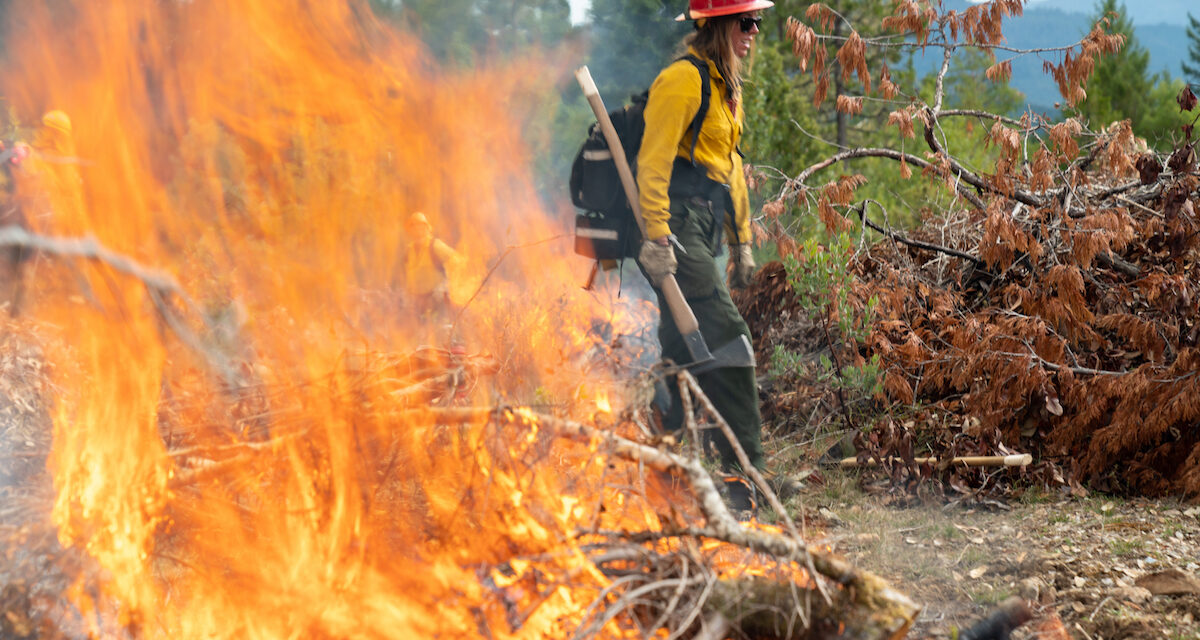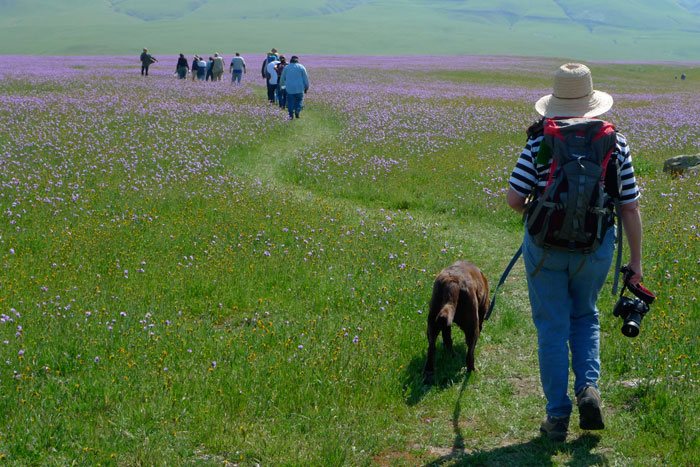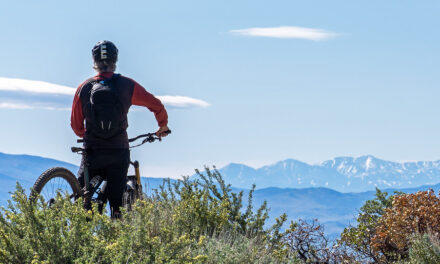- Death Valley’s Battle With Climate Extremes - 01/01/2024
- The Future of Homewood - 12/05/2023
- Kula Cloth - 10/18/2023
What California can learn from indigenous fire management practices
Catastrophic wildfires burned almost four and a half million acres of California in 2020. A dry winter has residents on edge about what the summer will bring. If we don’t learn to manage fire in the Golden State, we will continue to experience cataclysmic blazes into the foreseeable future.
Fortunately there is precedent if only we have the wisdom to listen. Prior to European contact, California Natives used fire to protect their homes, reduce populations of pests, improve seed germination and enhance hunting. According to Chico State professor Don Hankins, Natives set low intensity fires on 4-12 million acres in California every year. They did this for thousands of years.
California evolved with fire. The Cultural Fire Management Council (CFMC), based on Yurok land in Humboldt County, is bringing back traditional uses of fire to revitalize their ecology, economy and community. As Natives reclaim their right to use fire on the land, California’s 39 million other residents have an opportunity to acknowledge their expertise and learn from their wisdom.
“Our whole world was fire adapted, just like we are,” explains CFMC Fire Coordinator and Traditional Fire Practitioner Rick O’Rourke. “Fire helped the land stay healthy and helped the people stay healthy on the land. It helped us keep balance. Fire is the sharpest tool in our shed for preventing catastrophic wildfires.”
Half of the steep mountainous terrain, extending from the mouth of the Klamath River over 40 miles inland, was traditionally grassland prairie interspersed with majestic oaks and madrone. Natives regularly set low intensity burns to maintain the prairies, along with their food supplies and materials for basket making.
But burning practices were suppressed over the years. “You can read in letters from the Forest Service dating back to the 1900s, where they were telling rangers to shoot Indians who were putting fire on the land to take care of it,” says Margo Robbins, Executive Director of CFMC. “When I was growing up, setting an unauthorized fire meant you go to prison.” As a result, only 3% of the land is still prairie; the rest is dense forest choked with brushy debris.
A 2012 survey identified returning fire to the land as the most pressing issue facing the community. “There were two main reasons,” explains Robbins. “Basket making, and our elders.”
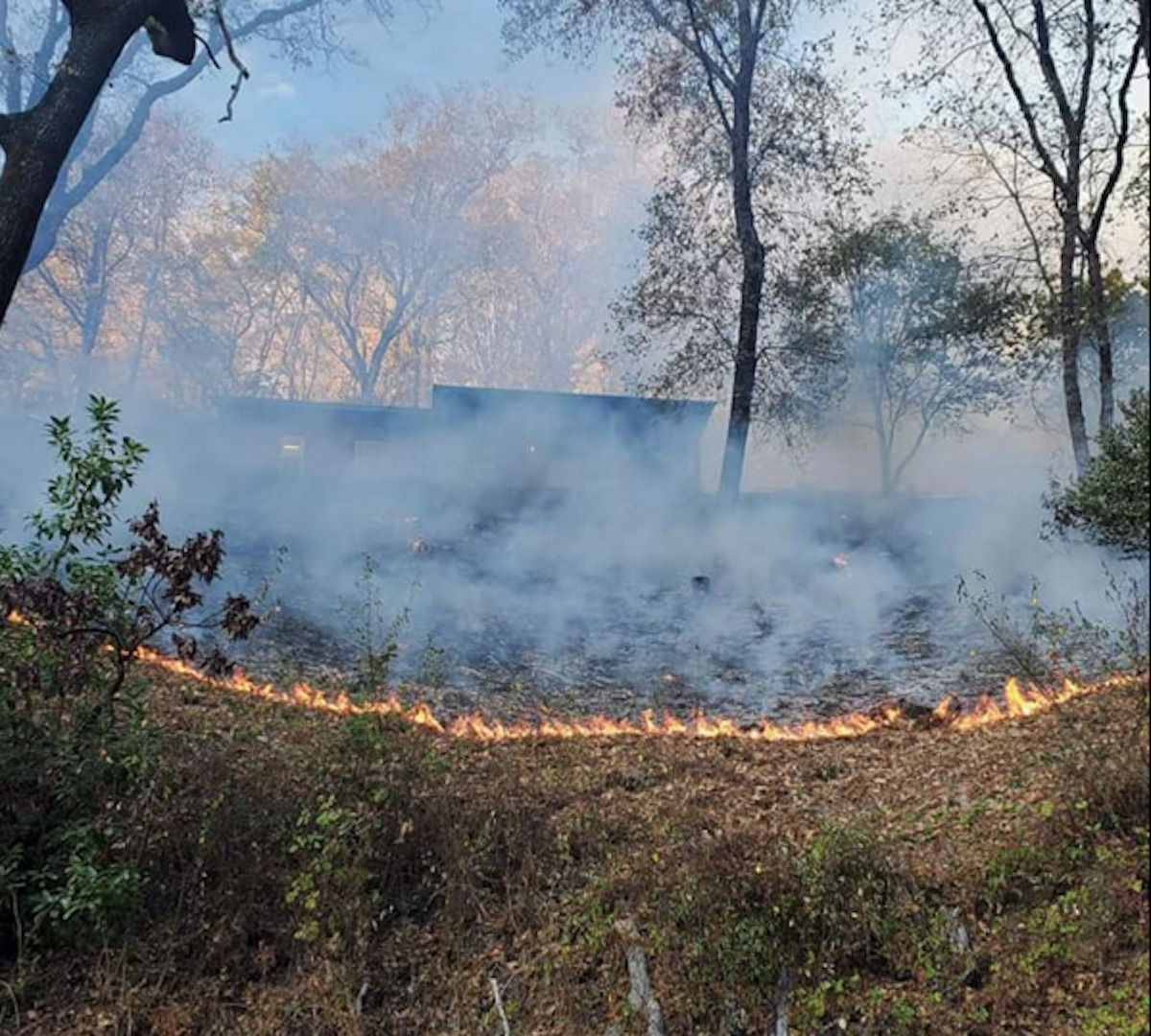
Fire slowly backing its way down the hill clearing the understory of brush and woody debris. Photo” Elizabeth Azzuz
“Our baskets are the Tribe’s main cultural resource,” explains O’Rourke.“Without the baskets we wouldn’t have been able to survive.” Traditionally baskets were an integral part of life, used for storage, to transport food and cradle babies. The frames are made from hazel, which needs to be burned to produce the single straight stems used in traditional basket making.Fire exclusion policies resulted in dense brushy hazel with no single straight stems. “The art of basket making was dying out,” Robbins says with a sigh.
“We also wanted to protect our elders and our whole community from wild fire,” she continues. “We only have one road onto and off of the reservation, so we worried that with the amount of fuel on the land our elders might not be able to escape in case of a wild fire.”
After identifying fire as the community’s most pressing need, interested folks began researching how to legally use fire as a tool to manage land. “We did our first burn in 2013,” says Robbins. “It seemed like it took forever to get to the point where we could actually burn!
“We had volunteers put a fire line around an area we wanted to burn,” explains Robbins. “We didn’t have any money, so I made a bunch of deer meat sandwiches for lunch, everybody was happy with that, we were just so happy we were going to have hazel sticks for our baskets again.” The initial burn of seven acres took place in the spring; the following spring there was about a two-week window for harvesting the hazel sticks.

Smoke rising off of a broadcast burn in a traditional hazel gathering area. Photo: Margo Robbins
For their first burn, CAL FIRE brought in a busload of prisoners to help keep it under control. “They brought 20 inmates, so I set my goal to train 20 local community members so we could do our own burning,” explains Robbins.
A core group deepened their commitment to reintroducing fire to the land. They got involved with the Nature Conservancy’s Training Exchange (TREX) program, an experiential curriculum that teaches prescribed burning. Robbins helped set up the entry level firefighting program—32 hours of classroom time and six days of burning. They filled the local community center with eager participants. Their first TREX program burned 67 acres; next year they burned 167. CFMC incorporated as a non-profit in 2015.
Seven tribal members, most of them elders, make up CFMC’s Board of Directors. In addition to Robbins and O’Rourke, they have a fire and fuels reduction crew composed of five people, and six others join sporadically when needed. They recently secured a three-year grant. “People put a lot of trust in us and we take that very seriously,” says O’Rourke.
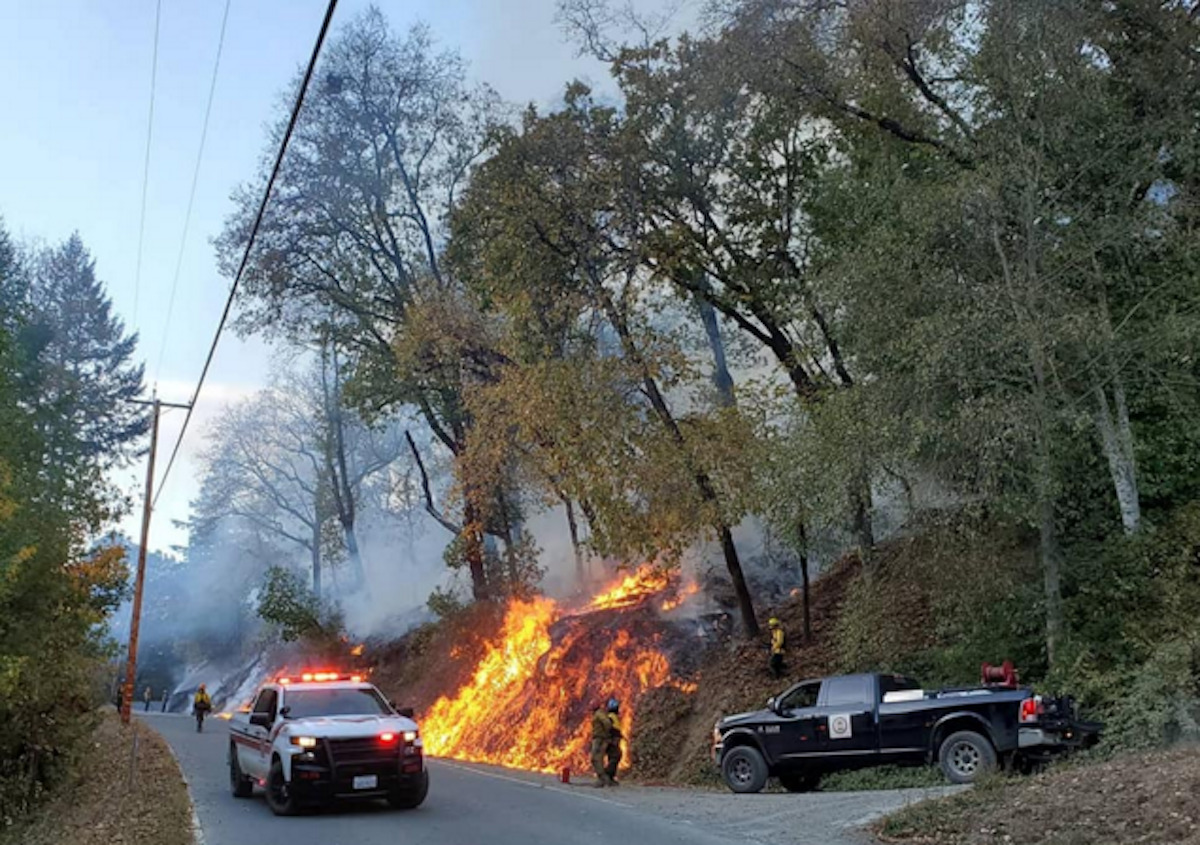
Cooperative burn between CFMC and the Yurok Tribe to protect an elder’s home. Photo: Margo Robbins
They earn that trust through careful preparation before any burn begins. “When we start on a unit, I try to identify as many threats as possible and mitigate those. Then I ask myself ‘what’s the worst thing that could happen here?’” O’Rourke explains. “If that risk is too great, we do more work; setting fire lines, raising the understory, removing fuel around legacy heritage trees. We keep working until there’s an acceptable level of risk.”
Not every burn has the same goals. “In one fire we might be burning for hazel sticks, that’s a lower intensity burn. But another area we might be burning to reduce invasives; that needs more heat,” explains O’Rourke. “You need to understand your own relationship to fire and what kind of activity you’ll be experiencing during a fire.” Not all of CFMC’s work is with burning; they also remove fuels from the roadside where occasional arson can quickly get out of control.
In addition to their crews, CFMC supports family burning, a traditional approach to fire that empowers the community and safeguards their homes. “Up in Thompson Creek we got permission to burn 12 acres. We got friends and family together, had a little barbecue, and had a little burn,” O’Rourke recalls fondly. “That’s how we do it, building community, being good neighbors, and being fire educated.”
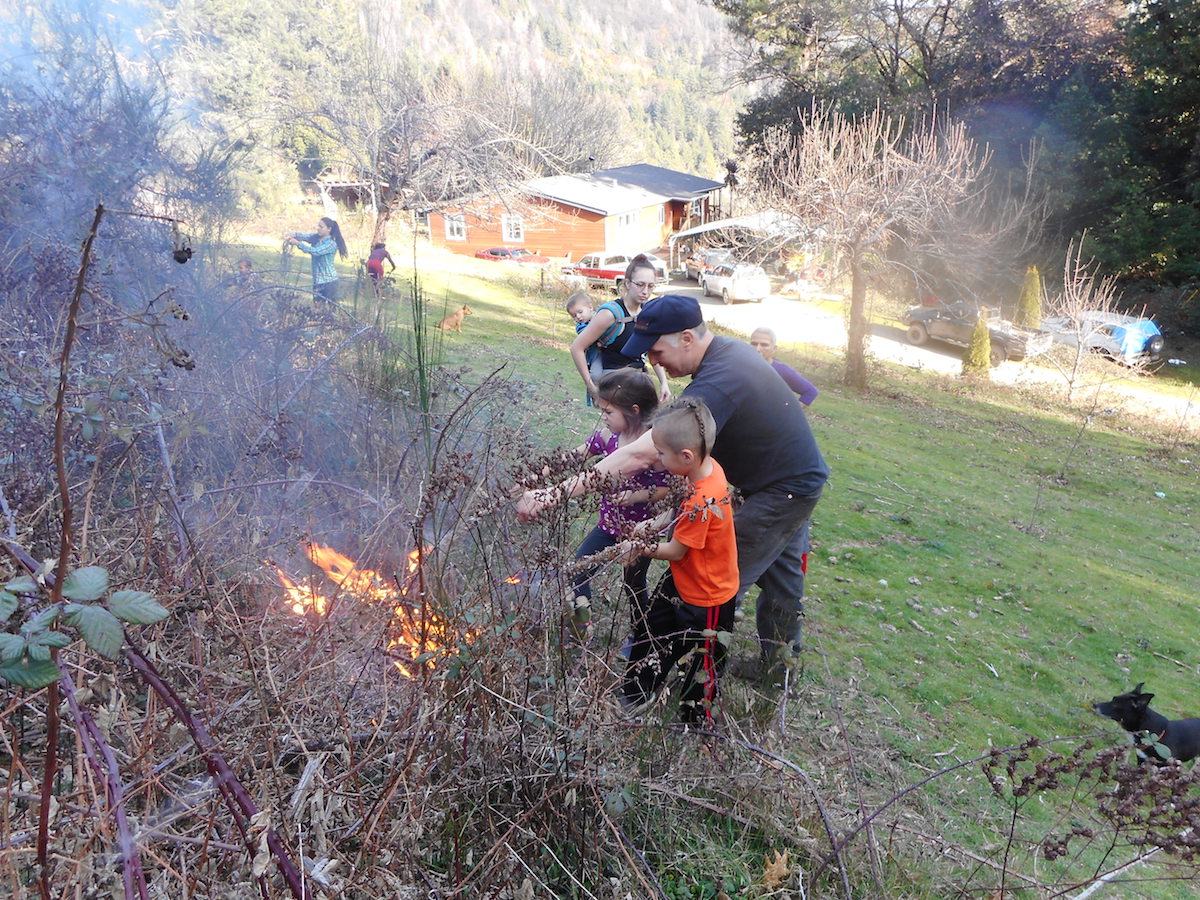
A family burn with Rick O’Rourke teaching the next generation how to burn safely. Photo: Margo Robbins
And once they burn an area, regular low intensity burns are needed to keep the land in balance and reduce the risk of a catastrophic wildfire. “It’s easy to start a fire, it’s much harder to hold a fire,” explains O’Rourke. “I don’t even like to call it a controlled burn; that gives you the illusion you’re in control.”
“I know how to fight fire,” he continues. “But I don’t like to fight fire. Fire is one of the sacred elements. We need to fight fire but it’s not a fight, it’s a struggle for balance. The land is already adapted to fire here in California. The important question is, ‘How long will it take to get back to a balanced state? Thousands of years? Hundreds?’ ”
Nobody knows precisely the scope of work that needs to be done, but there’s a lot of it and we all need to be part of the solution or suffer the devastation that comes from inaction. “I feel like people have two choices,” explains Robbins. “They can continue to do nothing and wait for the next catastrophic fire to come, or they can learn to live with the smoke from controlled burns.
“We need to decide what our relationship with fire will look like,” Robbins says. “Will it be massive amounts of toxic smoke that blanket our communities for weeks from catastrophic wildfires? Or will it be the limited amount of wood smoke produced by a prescribed burn? There is no such thing as a no-smoke or a no-fire option.” She pauses. “The good news is that we can decide what fire will look like in our lives.”

